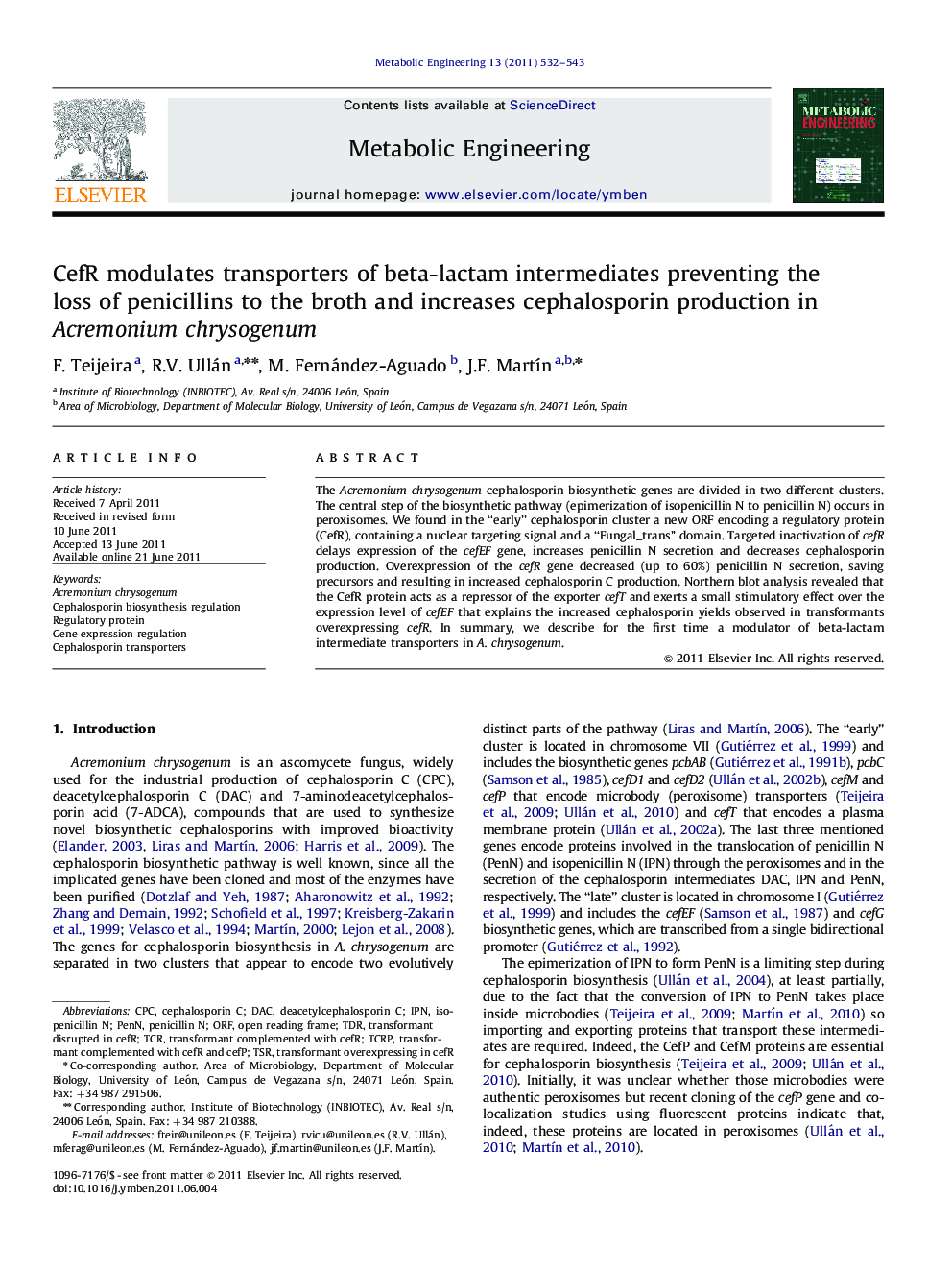| Article ID | Journal | Published Year | Pages | File Type |
|---|---|---|---|---|
| 31613 | Metabolic Engineering | 2011 | 12 Pages |
The Acremonium chrysogenum cephalosporin biosynthetic genes are divided in two different clusters. The central step of the biosynthetic pathway (epimerization of isopenicillin N to penicillin N) occurs in peroxisomes. We found in the “early” cephalosporin cluster a new ORF encoding a regulatory protein (CefR), containing a nuclear targeting signal and a “Fungal_trans” domain. Targeted inactivation of cefR delays expression of the cefEF gene, increases penicillin N secretion and decreases cephalosporin production. Overexpression of the cefR gene decreased (up to 60%) penicillin N secretion, saving precursors and resulting in increased cephalosporin C production. Northern blot analysis revealed that the CefR protein acts as a repressor of the exporter cefT and exerts a small stimulatory effect over the expression level of cefEF that explains the increased cephalosporin yields observed in transformants overexpressing cefR. In summary, we describe for the first time a modulator of beta-lactam intermediate transporters in A. chrysogenum.
► A regulatory gene cefR modulates cephalosporin biosynthesis. ► Inactivation of CefR increases PenN secretion and decreases CPC. ► CefR controls expression of cefT and cefEF. ► In summary, CefR saves intermediates for CPC production.
